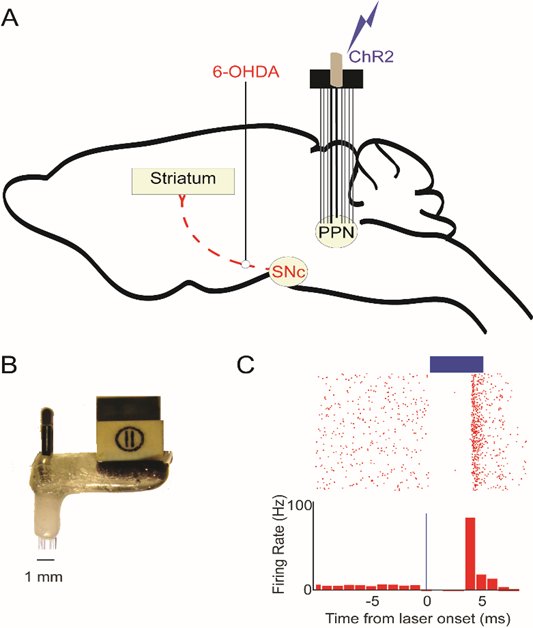
Freezing of Gait & Selective Cell Modulation of the Pedunculopontine Nucleus
Freezing of gait in Parkinson’s disease (PD) manifests as the inability to move, despite having desire and intent to do so. This can be triggered by stressful or unfamiliar stimuli and likely involves both motor and cognitive systems. The pedunculopontine nucleus (PPN) is an important regulator of gait which has also been shown to degenerate in PD. We are assessing the contribution of PPN dysfunction to freezing of gait by developing behavioral paradigms that induce freezing in a mouse model of PD.
Using this model, we will assess the changes in activity of different populations of PPN neurons during episodes of freezing, which will provide new insight on the pathophysiology of this treatment-refractory symptom of PD.
